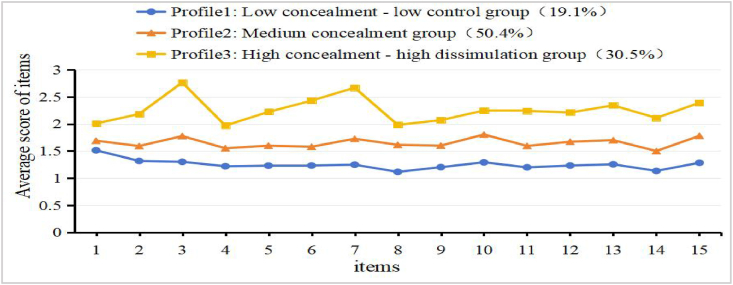Latent profile analysis of spousal information concealment in patients with cancer: A cross-sectional study
IF 2.8
3区 医学
Q1 NURSING
引用次数: 0
Abstract
Objective
This study aimed to investigate spousal information concealment in patients with cancer and analyse its influencing factors.
Methods
Between April and July 2024, 371 spouses of patients with cancer were surveyed using the Demographic and Clinical Characteristics Questionnaire, the Information Concealment Scale for Caregivers, Fear of Progression Questionnaires for Partners, and the Medical Coping Modes Questionnaire. Influencing factors were analysed using latent profile analysis.
Results
Based on the degree of information concealment, spouses of patients with cancer were categorised into three subgroups: the low concealment - low control (19.14%), medium concealment (50.40%), and high concealment - high dissimulation group (30.46%). Multivariate logistic regression analysis revealed that sex, age, educational level, disease stage, fear of disease progression, and medical coping modes were the influencing factors of the information concealment subgroups (P<0.05).
Conclusions
Information concealment among spouses of patients with cancer has individualized characteristics. Analysing the demographics, disease features, and psychological conditions of spouses in different information concealment subgroups can help medical staff formulate more targeted and personalized interventions and reduce the degree of information concealment among patients' spouses.

癌症患者配偶信息隐瞒的潜在特征分析:一项横断面研究。
目的:调查癌症患者配偶信息隐瞒情况,并分析其影响因素。方法:采用人口统计学与临床特征问卷、照顾者信息隐藏量表、伴侣进展恐惧问卷和医疗应对方式问卷,于2024年4 - 7月对371例癌症患者配偶进行调查。利用潜在剖面分析法对影响因素进行分析。结果:肿瘤患者配偶根据信息隐瞒程度分为低隐瞒-低控制组(19.14%)、中隐瞒组(50.40%)、高隐瞒-高隐瞒组(30.46%)3个亚组。多因素logistic回归分析显示,性别、年龄、文化程度、疾病分期、对疾病进展的恐惧程度、医疗应对方式是信息隐藏亚组的影响因素(P<0.05)。结论:癌症患者配偶信息隐瞒具有个体化特点。分析不同信息隐藏亚组配偶的人口学特征、疾病特征和心理状况,有助于医务人员制定更有针对性和个性化的干预措施,降低患者配偶的信息隐藏程度。
本文章由计算机程序翻译,如有差异,请以英文原文为准。
求助全文
约1分钟内获得全文
求助全文
来源期刊

Asia-Pacific Journal of Oncology Nursing
Multiple-
CiteScore
2.80
自引率
11.10%
发文量
136
审稿时长
31 days
 求助内容:
求助内容: 应助结果提醒方式:
应助结果提醒方式:


